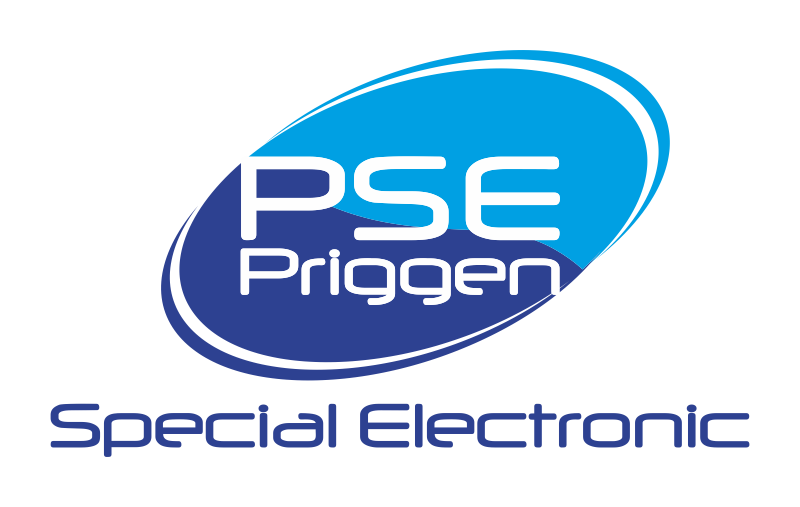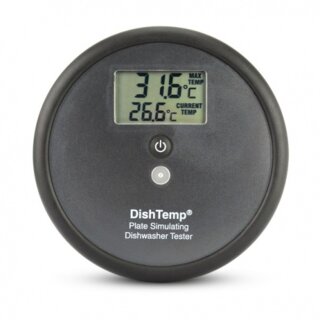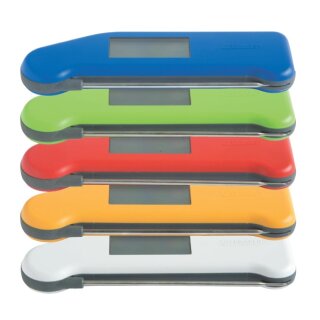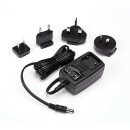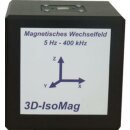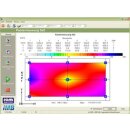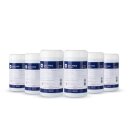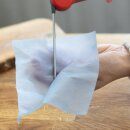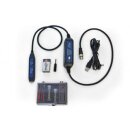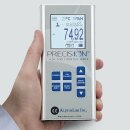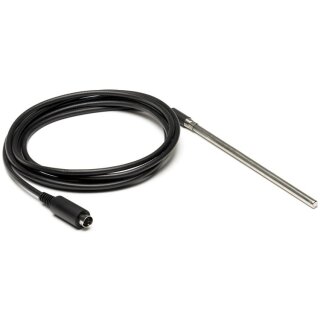
-
: 1 - 3 Workdays (DE - int. shipments may differ)
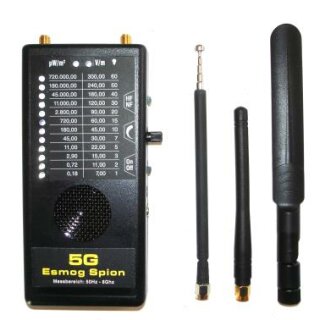
-
: 4 - 6 Workdays (DE - int. shipments may differ)
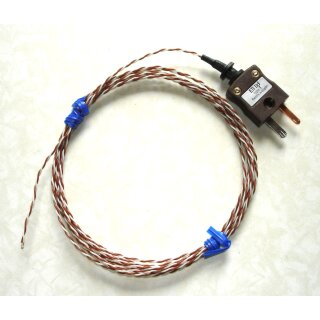
-
: 1 - 3 Workdays (DE - int. shipments may differ)
- SKU:
- 800-890
- for fast response testing of frying oil quality
- inexpensive
- no sample preparation or special training required
- sample dip-and read method
- easy to read colour chart for decision making
- SKU:
- 810-071
- SKU:
- PS011
- SKU:
- r5109c
- SKU:
- TA488
- Differential divider probe with 200MHz bandwidth
- Divider ratio: 10:1
- Differential input voltage range: ±20V
- Common mode input voltage range: ±60V
- 9V battery compartment
- Power supply cable for connection to an optional USB power supply
- SKU:
- TA489
- Differential divider probe with 800MHz bandwidth
- Divider ratio: 10:1
- Differential input voltage range: ±15V
- Common mode input voltage range: ±30V
- 9V battery compartment
- Power supply cable for connection to an optional USB power supply
- SKU:
- TA172
N(f) to SMA(m) inter-series adapter
- SKU:
- AIC3
- Dual polarity display with sum
- Selectable ranges, 2 million ions/cc, or 200 million ions/cc
- Data recording, date/time Stamped – Stored on removable microSD card
- Data streaming, record uploading and plotting – via included PC app
- Automatic re-zero for long-term unattended operation – selectable
- Peak level capture
- Averaging – selectable
- Rechargeable Li battery
- Robust metal housing
- Tripod mount, wall mount, and desk top kick stand
- Deluxe carrying case
Measuring Instruments: Precision for Every Application
Measuring instruments are indispensable tools in many industries. Whether in industry, craftsmanship, or private use, the accuracy and reliability of measurements are of crucial importance. In our online shop, we offer a wide range of high-quality measuring instruments that meet the highest standards. Discover how our measuring instruments can make your work easier and more efficient.
Our Measuring Instruments Ensure the Highest Precision and Reliability
The measuring instruments we offer in our online shop stand for the highest precision and reliability. Each device is carefully selected and tested to ensure that it meets strict quality requirements. Whether you need a measuring instrument for temperature measurement, humidity determination, or electrical testing, you will find the right product with us. Our measuring instruments are ideal for both professional use and demanding hobbyists.
Measuring Instruments for a Wide Range of Applications
In our extensive range of measuring instruments, you will find the right device for almost every application. Whether for the construction industry, electrical engineering, environmental technology, or the medical field – we offer specialized measuring instruments that are precisely tailored to your needs. With our modern measuring instruments, you can capture accurate and reliable data that helps you make informed decisions and maintain the quality of your work.
Why Measuring Instruments from Our Online Shop Are the Best Choice
When purchasing measuring instruments, not only precision but also ease of use and durability matter. In our online shop, you will find measuring instruments that stand out due to their simple handling and robust construction. We place great importance on ensuring that our customers are satisfied with our products and therefore offer comprehensive service and support. Our experts are always available to help you choose the right measuring instrument and answer any questions you may have.
FAQ on measuring instruments
What is a measuring instrument and what is it used for?
What is a measuring instrument and what is it used for?
A measuring instrument is an instrument used to determine physical quantities such as length, weight, temperature, pressure, or electrical current. It is used in various fields such as science, industry, medicine, and crafts to perform precise measurements and obtain accurate data. Examples of measuring instruments include thermometers, scales, voltmeters, and calipers. They help ensure quality control, optimize processes, and comply with safety standards.
What types of measuring instruments are there?
What types of measuring instruments are there?
There are different types of measuring instruments, each serving a specific purpose. The most common include:
Length measuring instruments: rulers, calipers, micrometers.
Weight measuring instruments: scales, spring scales.
Temperature measuring instruments: thermometers, infrared thermometers.
Pressure measuring instruments: manometers, barometers.
Electrical measuring instruments: multimeters, oscilloscopes.
Volume measuring instruments: graduated cylinders, burettes.
Moisture measuring instruments: hygrometers, humidity meters.
Speed measuring instruments: tachometers, radar.
Light measuring instruments: lux meters, photometers.
Sound measuring instruments: decibel meters, sound level meters.
These instruments help you take precise measurements in various fields.
How does a measuring device work?
How does a measuring device work?
A measuring device works by measuring physical quantities such as length, temperature, pressure, or current and converting them into an easy-to-read form. It can be mechanical, electrical, or digital. An analog meter displays values on a scale, while a digital meter presents the values numerically. Sensors within the device detect the quantity being measured and convert it into a signal, which is then displayed. You should ensure that the measuring device is calibrated regularly to ensure accurate results.
What should you consider when purchasing a measuring device?
What should you consider when purchasing a measuring device?
When purchasing a measuring device, you should pay attention to the following points:
Measurement accuracy: Pay attention to the device's accuracy and tolerance values.
Measuring range: Make sure the measuring range meets your requirements.
Quality: Choose a device from a reputable manufacturer to ensure a long service life.
Ease of use: The device should be easy to use and have a clear display.
Calibration: Check if the device is calibrated or can be easily calibrated.
Features: Consider what additional features, such as memory or data transfer, you need.
Value for money: Compare different models to find the best value for money.
Warranty and support: Pay attention to the warranty conditions and customer support.
These aspects will help you choose the right measuring device for your needs.
How is a measuring device properly calibrated and maintained?
How is a measuring device properly calibrated and maintained?
A measuring device is properly calibrated and maintained by following these steps:
Calibration:
- Identify the reference material or reference values required for calibration.
- Ensure the measuring device is clean and free of contaminants.
- Perform the calibration according to the manufacturer's instructions.
- Document the calibration results and compare them with the reference values.
- If deviations exist, adjust the measuring device accordingly.
- You can also return the measuring device to us. We will calibrate it for you and issue a calibration certificate.
Maintenance:
- Clean the measuring device regularly to ensure accurate measurements.
- Inspect the device for physical damage and wear.
- Replace worn or damaged parts.
- Perform regular functional tests.
- Store the measuring device under the conditions recommended by the manufacturer.
Regular calibration and maintenance ensure the accuracy and longevity of your measuring device.
What are the benefits of using a measuring device?
What are the benefits of using a measuring device?
Using a measuring device offers numerous advantages. First, it enables precise and reliable measurements, which are essential for many applications. Second, it saves time because measurements can be performed quickly and efficiently. Third, it increases safety because accurate measurements can identify potential hazards. Fourth, it improves the quality of products and services through precise monitoring and adjustment. Finally, it contributes to cost reduction by optimizing material consumption and minimizing waste. A measuring device is therefore an indispensable tool in many industries.
Are there special safety instructions when handling measuring devices?
Are there special safety instructions when handling measuring devices?
Yes, there are important safety instructions when handling measuring devices:
Calibration: Check the calibration of the measuring device regularly to ensure accurate results.
Instructions for use: Read and understand the manufacturer's instructions for use completely.
Protective clothing: Wear appropriate protective clothing, especially when performing chemical or electrical measurements.
Environment: Maintain a clean and dry work environment to avoid inaccurate measurements.
Storage temperature: Maintain the recommended storage temperatures to avoid damage to the device.
Handling: Handle the device with care to avoid physical damage.
Zeroing: Check the zeroing of the device before each measurement to ensure accurate results.
These instructions help extend the life of the measuring device and increase safety.
